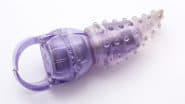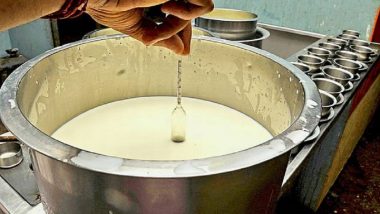New Delhi, November 20: Researchers at IIT-Hyderabad are working on developing smartphone-based sensors to detect adulteration in milk. As a first step, they have developed a detector system to measure the acidity of milk through an indicator paper that changes colour depending on the level, a statement said. They have also developed algorithms that can be incorporated on to a mobile phone to accurately detect the colour change, it added.
The research, undertaken by a team led by Professor Shiv Govind Singh, has been published in the November 2018 issue of Food Analytical Methods journal. "While techniques such as chromatography and spectroscopy can be used to detect adulteration, such techniques generally require expensive setup and are not amenable to miniaturisation into low-cost easy-to-use devices. Hence, they do not appeal to the vast majority of milk consumers in the developing world," Singh said. Milk Adulteration Busted by FDA in Mumbai; Here's How to Check If Milk is Pure Or Not.
He added that there is a need to develop simple devices that consumers can use to detect milk contamination. "It should be possible to make milk adulteration detection failsafe by monitoring all of these parameters at the same time, without the need for expensive equipment," he said. The prototype smartphone-based algorithm analyses the colour of the sensor strips that are dipped in milk and then captured using the phone's camera. This is then converted into pH (acidity) ranges. On testing with milk spiked with various combinations of contaminants, the team found near-perfect classification with accuracy of 99.71 per cent, the statement said.
The team will extend the research to study the effects of mobile phone cameras and lighting on detection efficiency. In the long run, the team hopes to develop sensors for other physical properties such as conductivity and refractive index, and integrate it with the pH detection unit to obtain comprehensive milk quality check systems that can be easily deployed by the consumer using mobile phones and other hand-held devices.
The statement cited a recent report by the Animal Welfare Board that stated that 68.7 per cent of milk and milk by-products in the country are adulterated with items like detergent, glucose, urea, caustic soda, white paint and oil. Chemicals such as formalin, hydrogen peroxide, boric acid and antibiotics could also be added to milk to increase shelf life.













 Quickly
Quickly



















